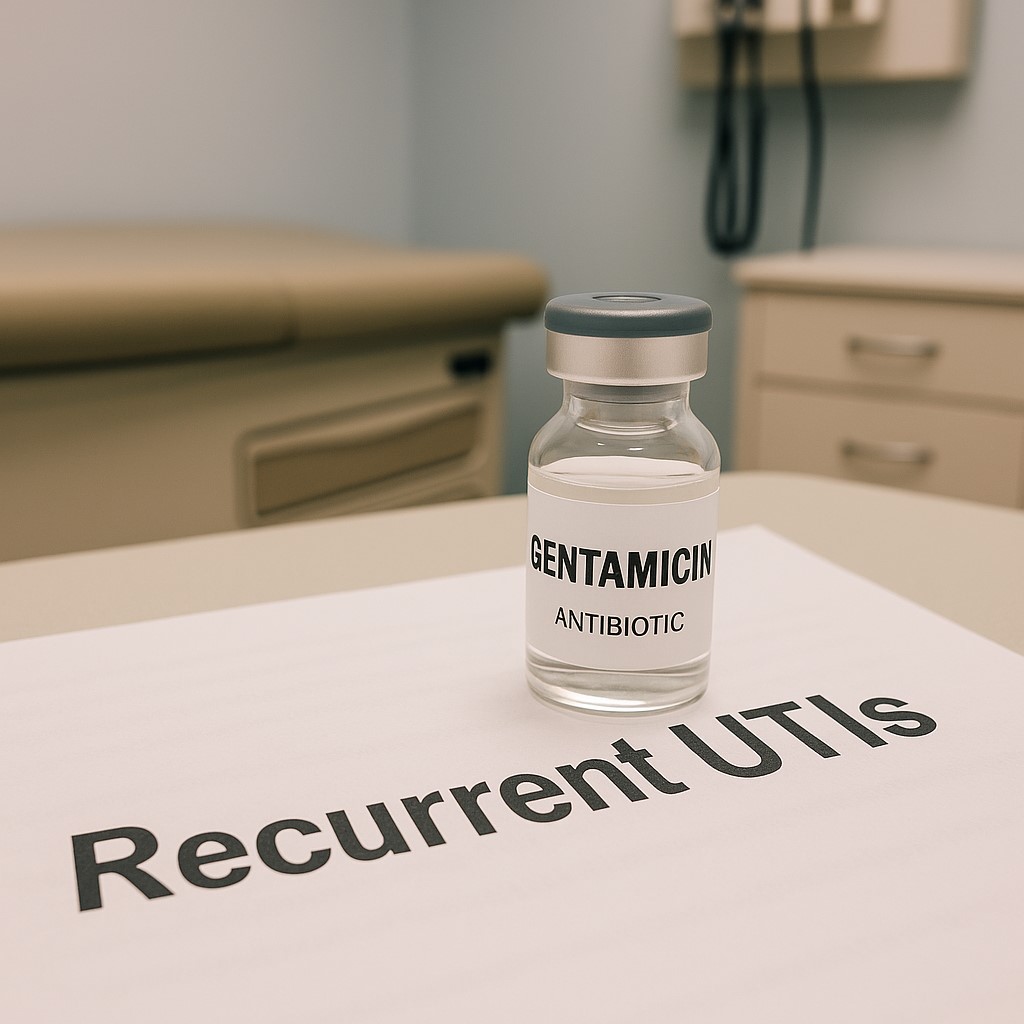How common are urinary tract infections (UTIs) in females?
30% to 50% of adult women will suffer from a urinary infection in their lifetime. This is a bladder infection, but if untreated, it can lead to a kidney infection.
Of these, 25% of women will have a second infection within 6 months.
Around 2.5% of women will have recurrent urinary infections.
What do I feel if I have a UTI?
- Urinary frequency (often one feels the need to go and only few drops are passed),
- Urine can be burning or stinging, bloody,foul smelling, cloudy.
- Lower abdominal pain
- Fever, or chills and rigors
- Tiredness
- If the infection goes up to the kidney, one may experience loin pain, fever and nausea (this is called pyelonephritis)
What risk factors lead to frequent urinary tract infections (UTIs)?
Poor hygiene techniques
Menopause leads to vaginal atrophy (thinning)
Antibiotics reduce the natural bacteria of the vagina that prevent colonisation by
other bacteria
Weakness of the natural defences due to reduced antibody (IgA and IgG antibodies), and reduced glycosamine glycan (GAG) layer, which typically acts as a barrier to bacteria in the bladder.
Incomplete bladder emptying
A weak immune system secondary to some medical conditions like diabetes (especially uncontrolled), certain medications and other causes
Indwelling catheters
What to do if you suffer from UTIs
Have your urine checked. Visit your GP to perform a dipstick urine test. Urine testing positive for nitrites and leukocytes must be sent for culture and sensitivity. Knowing the bacteria causing the infection is critical to tailoring the antibiotic choice.
Refrain from blind repeated antibiotic treatment, as this leads to antibiotic
resistance.
In addition, one needs to ensure that there is confirmation of an infection as specific conditions like interstitial cystitis mimic such conditions.
What types of antibiotics can be given?
· In the acute setting, the doctor will prescribe a 3 to 5-day antibiotic course.
· Single-dose antibiotics post-intercourse can be prescribed for those whose infection is precipitated by sexual intercourse.
· Urologists are refraining from the traditional prophylactic daily prescribing of antibiotics due to the mounting of antibiotic resistance.
What investigations will you be asked to undergo?
Ultrasound of your urinary tract, looking for anatomical variations, stones, incomplete bladder emptying, and other issues leading to recurrent infections.
A camera test called flexible cystoscopy looks at the urethra (the water pipe) and the inside lining of the bladder to rule out structural problems that could be causing repeated infections.
How can I prevent urinary tract infections?

Are cranberry juice or supplements still recommended?
Extensive research has concluded that cranberry has no role in urinary tract prevention.
I still have a UTI despite lifestyle changes. What can I do?
Methenamine hippurate (Hipprex) has antibacterial activity because the methenamine is converted to formaldehyde, an antiseptic, and hippuric acid, which keeps the urine acid. Typically, this is active against E. coli, enterococci and staphylococci and less effective against Enterobacter species. This is prescribed 1G to be taken twice daily on a long-term basis. The evidence base for this remains weak. Hiprex can be combined with D-Mannose.
Oestrogen typically prescribed in postmenopausal females to address the thinning of the vaginal layer to regain back the natural defences against the bacteria coming from the gut. This can be prescribed either as oestrogen cream or pessaries. Oestrogen creams can cause local irritation but systemic absorption and effect is minimal. These are contraindicated in patients with a history of breast cancer and known or suspected oestrogen-dependent malignant tumours (such as endometrial cancer).
Bladder Instillations with Hyaluronic Acid (HA). The inner layer of the bladder has cells that are connected tightly to each other to prevent bacterial invasion. This is referred as glycosaminoglycan (GAG) layer. Instilling hyaluronic acid (HA) and chondroitin sulfate (CS) aims to boosts the glycosaminoglycan (GAG) layer on the surface of the bladder, providing a protective layer. The instillations are typically given once a week for 4 weeks then once monthly for 6 months.
Is there a vaccine to prevent urinary infections?
Uromune is an immunostimulant vaccine for treating recurrent urinary infections.
The most common bacteria (Escherichia coli, Klebsiella pneumoniae, Proteus vulgaris and Enterococcus faecalis) have been inactivated.
This self-treatment is administered daily over three months via a spray applied under the tongue. Once administered it interacts with the immune system, resulting in long-term protection from UTIs in the patient.
Around 80% reduction in infections; giving back females a better quality of life.
How to use the vaccine?
At the beginning of each vial, turn the pipette horizontally and pump the spray up to four times to ensure the dispenser is adequately filled.
Direct the pipette under the tongue and spray twice. Keep the dose under the tongue for around 2 minutes, then swallow it. Rotate the pipette back to its original position (vertical downward); this blocks the pump action.
Meals and/or fluids should not be taken directly after application of the spray to allow maximum exposure and contact of the product with the area sprayed. Brushing teeth or mouth rinsing should be avoided for at least 30 minutes after taking the vaccine.


